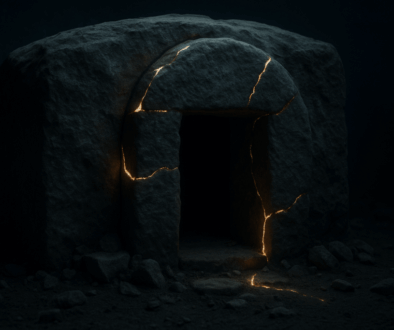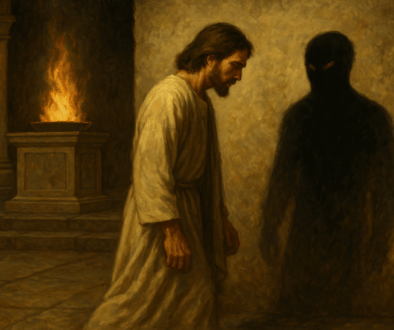The Bible Was Never Meant to Be Flat
Reading Scripture Beyond Literalism
We’ve inherited a way of reading the Bible that flattens it.
Treats it like a spreadsheet.
A rulebook.
An audit log of God’s opinions.
But the Bible was never meant to be read like that.
It’s not a lab report.
Not a court transcript.
Not a theology textbook with neatly indexed answers.
It’s a living, breathing library —
poetry, prophecy, parable, apocalypse.
It’s full of rhythm and rupture and mystery.
And we strip it of its power when we force it to behave like modern science.
1. Literalism Is a Modern Obsession
Yes — the literal sense of Scripture has always mattered.
But it was never the whole picture.
From Origen to Augustine to Aquinas, early Christians read the Bible on multiple levels:
- Literal (what happened)
- Moral (how to live)
- Allegorical (what it reveals about Christ)
- Anagogical (what it says about eternity)
But after the Enlightenment, something shifted.
The rise of rationalism and scientific skepticism led many defenders of the faith to double down. If Scripture could be proved — historically, grammatically, scientifically — then its authority would stand.
So literalism became the fortress.
And in the process, we collapsed the Bible’s multi-dimensional nature into a single, rigid plane.
“The letter kills, but the Spirit gives life.”
— 2 Corinthians 3:6
We don’t defend Scripture by flattening it.
We honor it by letting it breathe.
“Scripture is like a river… shallow enough for a lamb to wade, but deep enough for an elephant to swim.”
— Gregory the Great
2. Jesus Didn’t Teach in Proof-Texts
Jesus didn’t hand out doctrinal statements.
He told stories.
“He did not say anything to them without using a parable.”
— Mark 4:34
Nearly one-third of his recorded words in the Synoptic Gospels are parables —
living metaphors, open-ended symbols, invitations to enter meaning.
You can’t dissect a parable the way you dissect a frog.
You have to inhabit it.
Think of the Prodigal Son.
The Mustard Seed.
The Lost Coin.
They aren’t arguments.
They’re mirrors.
And the moment we reduce them to one-to-one allegories, we lose their mystery — and their power.
3. Scripture Undermines Flat Reading
If the Bible wanted to be literal in every verse, it wouldn’t contradict itself so poetically.
- Genesis 1 and 2 tell two different creation stories — different names for God, different sequences.
- Proverbs 26:4–5 gives opposing advice, back-to-back:
“Do not answer a fool according to his folly…”
“Answer a fool according to his folly…” - Acts 9 and Acts 22 tell different versions of Paul’s conversion.
- Revelation is a symphony of symbols and visions — not a newspaper.
These aren’t problems to solve.
They’re invitations to wonder.
4. The Fourfold Reading Was the Norm
From the early Church through the medieval era, the Bible was read with layered reverence. The fourfold sense of Scripture was standard:
- Literal – What happened
- Moral – What to do
- Allegorical – What it means spiritually (especially Christologically)
- Anagogical – What it points to beyond (eternity, hope, destiny)
No serious Christian for the first 1500 years thought the literal was all there was.
And yet today, many treat it like the whole river —
forgetting it was only ever the surface.
5. Why We Cling to Literalism
Because it gives us control.
Because it promises certainty.
Because we think: “If I just read it plainly, I won’t get it wrong.”
But that’s an illusion.
Literalism doesn’t protect the soul — it protects the ego.
The part of us that wants tidy categories and theological precision.
But the Bible doesn’t offer safety.
It offers transformation.
“Our God is a consuming fire.”
— Hebrews 12:29
Not a formula.
Not a manual.
A fire.
6. The Literal as Vessel: Symbol, Depth, and Mythopoetic Truth
Literal readings aren’t wrong — they’re just incomplete.
In classical thought, especially in medieval theology and mythic philosophy, the literal is the lowest rung on a spiritual ladder. It grounds us — but it never confines us.
To read only the literal is like admiring a stained-glass window for its lead piping.
You miss the light streaming through.
This is mythopoetic truth — not a lie, but a symbolic resonance that speaks to the architecture of the soul.
Parables, images, and myths aren’t “untrue” because they’re not empirical.
They’re truer than fact — because they point to what is always true.
“Myth is not a lie. Myth is the soul’s deepest truth, wrapped in story.”
— Michael Meade
When someone asks, “But did it really happen?”
The deeper answer is: “It’s still happening — in you.”
7. How to Read the Bible with Depth, Mystery, and Wholeness
We live in a flattened world — of screens, stats, and spreadsheets.
We’ve been taught to read like data analysts.
Not seekers.
But this kind of reading starves the soul.
To recover the Bible’s power, we must learn to read it like poetry.
Like dream.
Like a living myth that speaks the heart’s native language.
How to Begin:
🕯️ Read with reverence, not just curiosity.
Pause. Breathe. Ask: What is this asking of me?
🔍 Ask what the story is doing in you.
Every story is a mirror.
What part of you is the older brother? The one lost? The one hoping to be found?
💭 Let symbols be symbols.
Don’t dissect the whale in Jonah.
Let it swallow you.
🧩 Read on four levels.
Let the literal speak. But then go deeper:
- Moral – What’s the soul-level lesson?
- Allegorical – What does this say about Christ and the Church?
- Anagogical – What eternal truth or hope does it offer?
🗣️ Read in conversation.
With mystics. With therapists. With poets and the poor.
The Bible was meant to be sung, wrestled, and passed around the fire.
8. The Invitation: Read Like a Disciple, Not a Fact-Checker
What if the Bible isn’t meant to be mastered — but to master you?
What if it’s not there to give easy answers — but to form better questions?
What if it’s not flat — but alive?
To read it rightly is to let it undo you.
To let it disorient, before it reorients.
To sit with tension. To make space for paradox. To wait on the Spirit.
Because the Bible isn’t a manual.
It’s a mirror.
A map.
A mystery.
Final Reflection
Maybe the problem isn’t that Scripture is too vague —
but that we’ve forgotten how to be in awe.
Let’s reclaim a way of reading that includes the literal,
but is never limited to it.
Let’s move past the Enlightenment’s obsession with certainty
and return to the Spirit’s movement of mystery.
The Bible was never meant to be flat.
Let it be as deep, strange, and beautiful
as the God it reveals.



